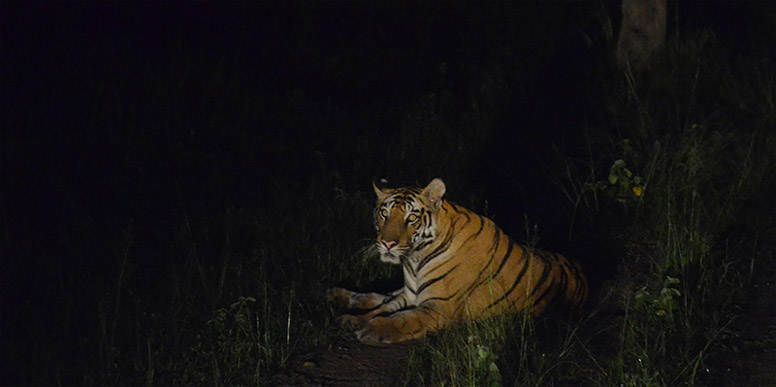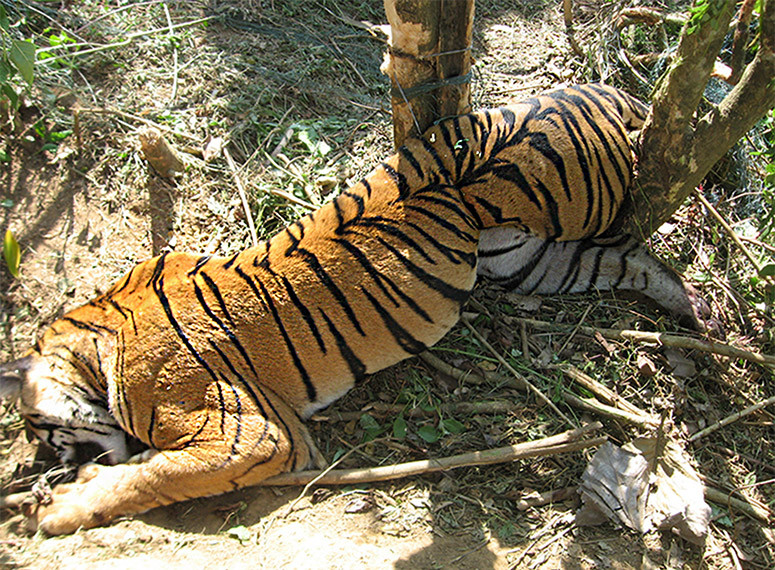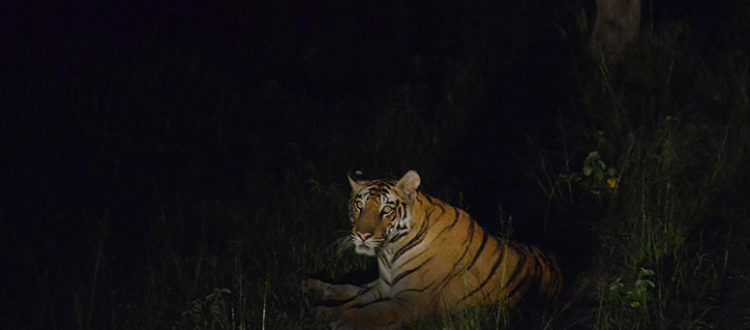Wandering Tigers and Conservation Hacks
by Jose Louies
“What should you call a cow that allows a tigress and her cubs to survive off her? Well, we worship the cow as a mother don’t we? And isn’t this the ultimate act of a mother?” This homespun wisdom was offered to me by a grizzled, weather-beaten old man I met in a village in central India recently. His words were simple but the attitude he expressed was a revelation.
Trying to understand what is currently going on in India is like finding your way through a complex maze: a billion-plus people, poverty, a growing demand for infrastructure development… and the largest population of tigers in the world. It sounds like a mess, but we successfully manage to conserve tigers and other wildlife whilst trying to address the needs of the second largest human population in the world.
How does it happen? Well, some of it at least can be outlined through that colloquial Hindi word ‘jugaad’, which roughly translates as ‘hack’. A jugaad is a makeshift innovation, typically used to get a machine working in a manner its designers may not have intended, and by cheaper, easier and practical means that go beyond the user manual. Such a solution does not obey traditional rules and regulations but is extremely effective; it is an art that Indians are now practicing in conservation too.
This I say from personal experience. I am no tiger expert or scientist but have a penchant for landing up in the most unlikely places. Like last week, when I was in the middle of central India’s tiger territory with a biologist friend.

On Global Tiger Day we must pledge to keep crucial habitat linkages called wildlife corridors safe
A Sacrifice to the Gods
There have been four cattle kills in the past week”, said the villager as he stopped to greet us, recognising my friend as the person who had put up camera traps in the nearby forest. “The tigress was sighted crossing the road near the village at around 8.00pm yesterday; I think she is still there.”
Now a tigress prowling along the fringes of a village with her cubs, lifting cattle, is a bad situation for a tiger lover. What if the villagers lose patience and poison a carcass? What if she and her cubs are killed by an angry mob? What Facebook campaign or letter to a government minister could ever save her?
This is a scenario that plays out regularly across India’s tiger lands. With the increased degradation and fragmentation of our forests, tigers must now share their territories with villages and farmlands and everyone residing therein, be they people or cattle. And while the news of cattle kills may not resonate in big cities, cattle are very precious commodities out in the hinterland.
Yet in certain places, like the one I was in, villagers seem to have evolved a remarkably accommodating attitude towards the tigers’ presence near their habitations. (The tigers here are known to come in for a comfortable dip in the village’s hand pump water tank on hot summer nights – without causing the slightest alarm, at least for now!)
“Instead of the sinful act of selling old cows to the slaughterhouse, it is better if the tiger, the incarnation of god, kills them.”
It was raining heavily that day. Our motorbike was already stuck in the slush and my shoes looked like football-sized mud blocks. But my curious mind demanded that we go right away to the spot where the tigress had killed a cow the previous night. The site, about half a kilometre from the village, was full of cow dung and hoof marks indicating a high volume of cattle traffic. The magic of rain was already turning the ground green. I could smell the stench of the carcass as we approached. The wisdom of the jungle warned me: ‘Thou shalt not examine a tiger kill without proper caution.’
“Look at that pugmark, it’s huge”, my biologist friend shouted over the rain as we saw the telltale signs of a struggle — broken branches of lantana, two long smooth grooves in the semi-solid mud made by the cow’s hooves as she was dragged off, and the solid, deep impressions of the tigresses paws in the mud. There was a sudden movement around the carcass under the lantana bushes and we froze. Was it her? No, a dog with a bloated belly revealed itself to our relief.
My friend went to check the camera trap he had placed nearby. Two curious cowherds joined us to see some tiger pictures and I took the opportunity to speak with them. Aren’t you afraid of tigers lifting your cows, I asked, living as you do in such close proximity to them?
Surprisingly they didn’t seem to mind. “It’s not such a bad idea to get compensation if one in 250 cows gets killed”, one of them said. “There are so many old cows in the herd and their chance of getting killed by a tiger is high. Instead of the sinful act of selling old cows to the slaughterhouse, it is better if the tiger, the incarnation of god, mother of forest, kills them.”
A complex profit-loss analysis based on spirituality! I was deeply impressed. But beyond that, I felt, it was a fine exemplar of that great Indian tradition of jugaad – of turning a difficult situation inside out, using it to one’s advantage in a manner no one could have anticipated.

A tiger killed by a wire snare. Wire snares are cheap and deadly traps set out by poaching communities on the fringes of certain protected forests.
Beyond the Fences
Of course, not all jugaad works to the itinerant tigers’ benefit. The next morning I saw a fence with thin electric wires enclosing the farmlands contiguous to the forest. I remembered what Rohit Kharoo, a good friend and honorary wildlife warden of Nagpur had told me about such makeshift electrified fences. Some farmers may be blasé about cattle kills but they still zealously guard their crops against herbivores. Every farm bordering the forest has these fences illegally connected to the main power line at night, he had said. “We don’t know how many animals get electrocuted since no one will report such animal deaths. At times there can be a chain reaction, when carnivores and scavengers try to eat the dead bodies still connected to the fences.”Such fences, charged with 200 volts of electricity, can be death traps for central India’s wandering tigers.
A few days later I received news of the disappearance of ‘Jai’, an iconic large male tiger, much photographed, who had ruled the landscape in and around the Umred Karhandla Wildlife Sanctuary in central India. Born in Nazgira Tiger Reserve, Jai was a perpetual migrant famous for his notorious way of hunting. He was a cattle thief par excellence and the presence of humans never bothered him; there were recorded instances where he had killed cattle still yoked to the plough while the farmer was taking a break or having his lunch!
The migrant lifestyle may have its air of romance, but for tigers in India that move between Protected Areas it is fraught with danger.
Jai was last seen in April. I spoke with concerned wildlife enthusiasts from the region; some were optimistic, some were blunt about his chances. All I can say is that he has always been a survivor. He thrived in a landscape dotted with villages and it was in his nature to move to another area when he sensed danger. I suspect – or I would like to believe, anyway – that he may have travelled hundreds of kilometres through farms and villages, across busy roads and canals to establish a new territory, as he has repeatedly done over the last nine years.
Did Jai beat the odds this time as well? Or did he fall prey to an illegal electric fence? Or a poisoned carcass? Or one of the thousands of wire snares laid down by poaching communities? I’m afraid I don’t know.
What I can do though, this Global Tiger Day, is ask you to think about the several pitfalls that confront tigers like him. The migrant lifestyle may have its air of romance, but for tigers in India that move between Protected Areas – as they must, to establish their own territories, to escape natural disasters or find better prey – it is fraught with danger.
Only improved enforcement and crucially, the securing of wildlife corridors – habitat linkages that allow animals to move freely between protected forests – can keep tigers like Jai safe. As we turn our minds today to this one iconic tiger that may hopefully still be found, let’s pledge to do all we can for the thousands we can save.









